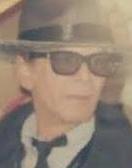Orton was a music major at UNT who took up photography while living in Austin after college. During a visit to his parents' home in Nacogdoches, he discovered the existence of freedom colonies and became curious about the impact that their relative autonomy had on their families. He found the Upshaw family, which had 13 children, and told them he was interested in photographing them. The family agreed, and he began taking the documentary-style, black-and-white photographs the day after Thanksgiving in 1988. In one memorable photo, the patriarch Edward Monel Upshaw is being introduced to his great-granddaughter, Reya, less than a year old, who is crying. Other photos include the annual homecoming celebration that brings in family members from all over the country in August.
"What I hope that it does is convey some sense of what it was like to be raised in a community like that," Orton said. "The children were not subject to all the negative aspects of the Jim Crow reality of the day. By virtue of fact they owned their own land, they automatically had their own independence."
- The Lost Pines Art League (Lost Pines Art Center) is a 501(c)(3) nonprofit organization and runs the Lost Pines Art Center. Its membership includes a diverse set of artists and supporters of the fine arts.
- The City of Bastrop is a historically significant city and the county seat of Bastrop County, Texas, United States.

